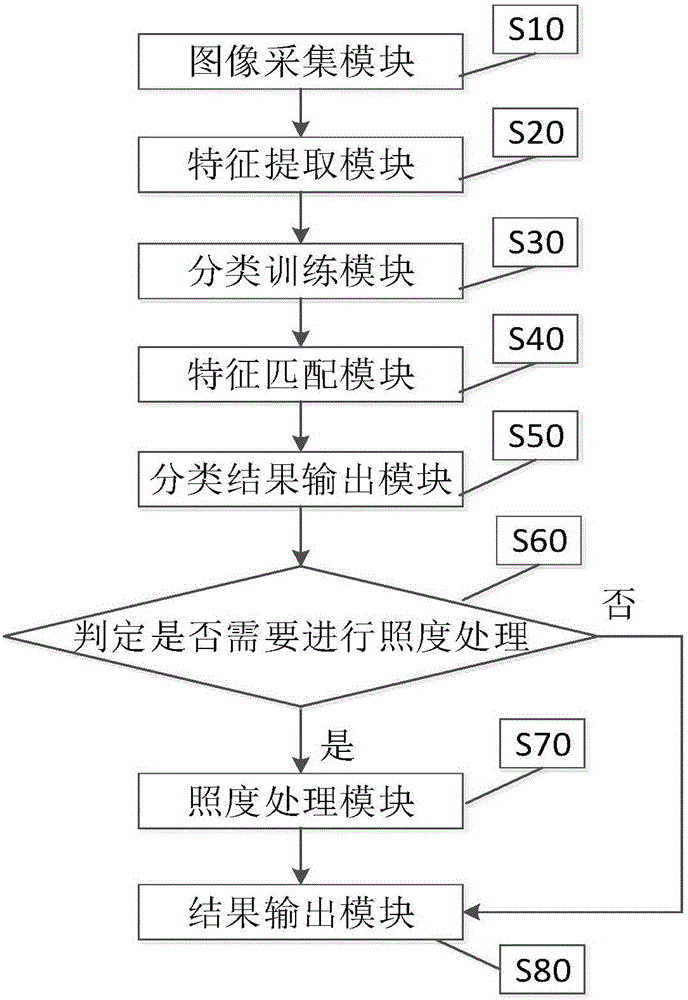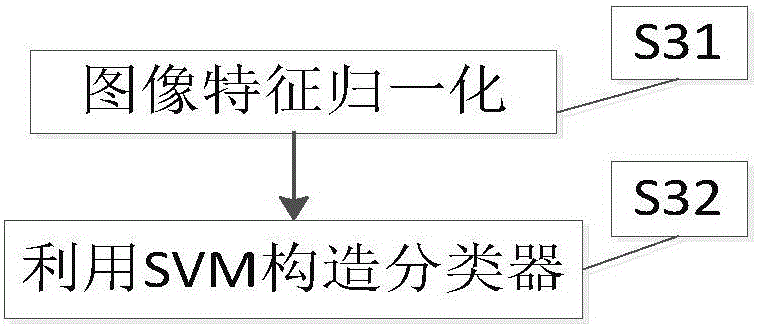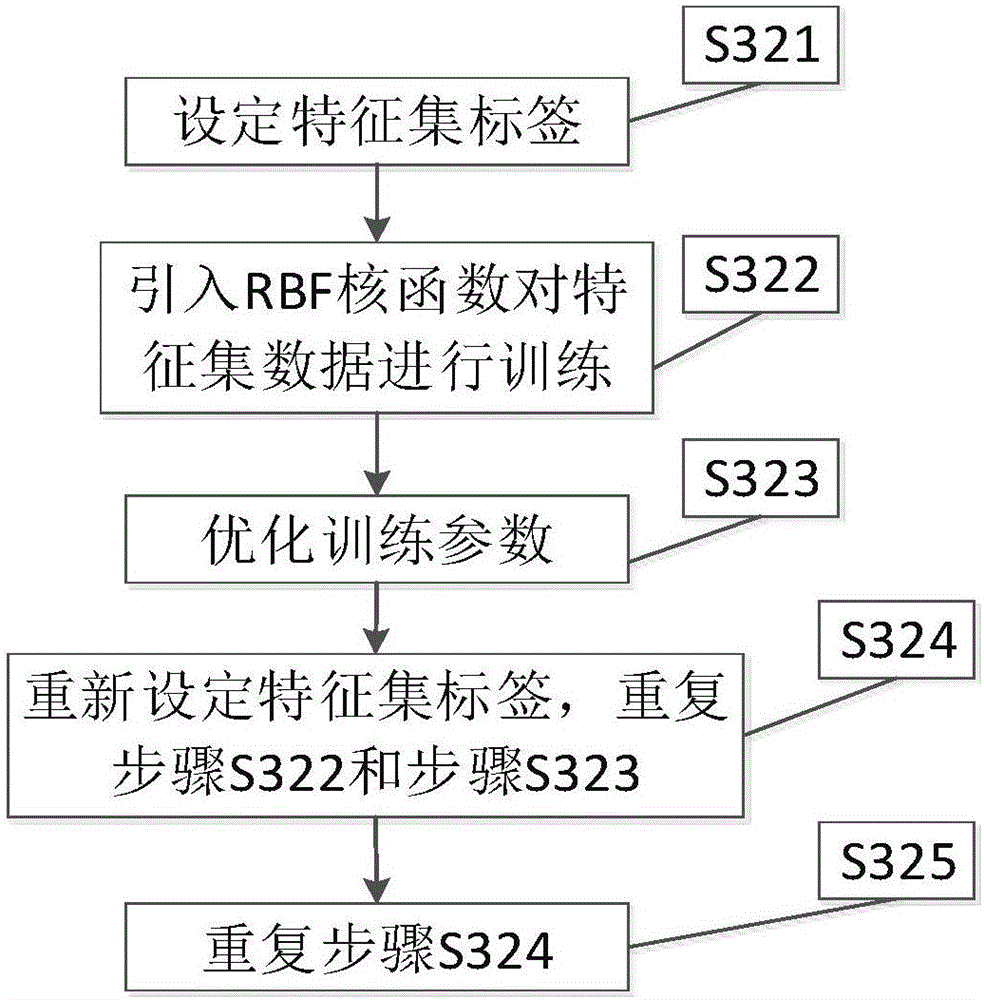Image classification and processing method based on different illuminances
A grayscale image and image technology, applied in the field of image processing, can solve problems such as large error in results, dark picture quality, and decreased contrast of surveillance video
- Summary
- Abstract
- Description
- Claims
- Application Information
AI Technical Summary
Problems solved by technology
Method used
Image
Examples
Embodiment approach 1
[0166] Embodiment 1, using the SVM algorithm to construct a classifier. Introduce the radial basis (RBF) kernel function of SVM classifier principle, construct the SVM learning training based on RBF kernel function, then the concrete realization of step S32 is as follows:
[0167] Step S321, set the feature set label based on the image feature set obtained in step S31, and set the feature set label of one type of image to 1 as the first image type of classification; the feature set label of the remaining image types is -1 .
[0168] Step S322, introducing the Radial Basis (RBF) kernel function of the principle of the SVM classifier, collecting and training the feature set based on the SVM learning and training of the RBF kernel function, and initially forming a training model.
[0169] Step S323, optimize the parameters in the above training model by means of cross-validation, select the optimal value, and obtain the first SVM classification prediction model.
[0170] Step S...
Embodiment approach 2
[0172] Embodiment 2, using the k-means algorithm to construct an image classifier. Then the concrete realization of step S32 is as follows:
[0173] In step S321, four observation points are randomly selected from the feature sets of the four types of illumination images obtained in step S31 as the data centers of the four types of clusters.
[0174] Step S322, respectively calculate the Euclidean distances from the remaining characteristic data to the four data centers, and assign these characteristic data to the clusters with the closest Euclidean distances to the data centers.
[0175] Step S323, according to the clustering result, calculate the arithmetic mean of all characteristic data in the 4 clusters, and use it as the new data center of each cluster.
[0176] Step S324, re-clustering all feature data according to the new data center.
[0177] Step S325, repeating step S324 until the clustering result no longer changes, forming a classification prediction classifier....
Embodiment approach 3
[0191] Embodiment 3, using a neural network algorithm to construct an image classifier. Then the concrete realization of step S32 is as follows:
[0192] Step S321, initialize the network model and network parameters.
[0193] Step S322, input training samples according to the image feature data obtained in step S31.
[0194] Step S323, calculating the input value and output value of each layer during the forward propagation of the BP neural network.
[0195] Step S324, calculating the output error of each layer of neurons according to the result of step S323.
[0196] Step S325, error backpropagation, using the gradient descent method to adjust the weights and thresholds of each layer.
[0197] Step S326, calculating the global error.
[0198] Step S327, judging whether the training termination condition is satisfied. When the global error reaches the preset accuracy or the number of learning times is greater than the set maximum number of times or all samples are traine...
PUM
 Login to View More
Login to View More Abstract
Description
Claims
Application Information
 Login to View More
Login to View More - Generate Ideas
- Intellectual Property
- Life Sciences
- Materials
- Tech Scout
- Unparalleled Data Quality
- Higher Quality Content
- 60% Fewer Hallucinations
Browse by: Latest US Patents, China's latest patents, Technical Efficacy Thesaurus, Application Domain, Technology Topic, Popular Technical Reports.
© 2025 PatSnap. All rights reserved.Legal|Privacy policy|Modern Slavery Act Transparency Statement|Sitemap|About US| Contact US: help@patsnap.com



